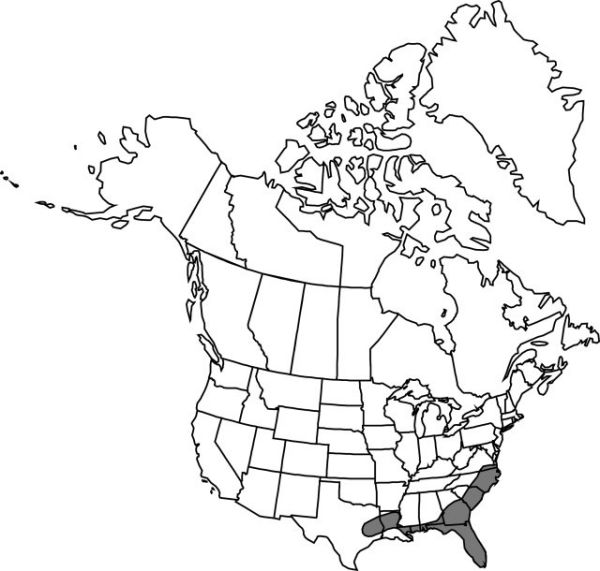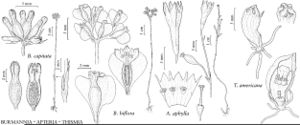Difference between revisions of "Burmannia biflora"
Sp. Pl. 1: 287. 1753.
FNA>Volume Importer |
FNA>Volume Importer |
||
| Line 31: | Line 31: | ||
-->{{#Taxon: | -->{{#Taxon: | ||
name=Burmannia biflora | name=Burmannia biflora | ||
| − | |||
|authority=Linnaeus | |authority=Linnaeus | ||
|rank=species | |rank=species | ||
| Line 46: | Line 45: | ||
|publication year=1753 | |publication year=1753 | ||
|special status= | |special status= | ||
| − | |source xml=https://jpend@bitbucket.org/aafc-mbb/fna-data-curation.git/src/ | + | |source xml=https://jpend@bitbucket.org/aafc-mbb/fna-data-curation.git/src/f50eec43f223ca0e34566be0b046453a0960e173/coarse_grained_fna_xml/V26/V26_1011.xml |
|genus=Burmannia | |genus=Burmannia | ||
|species=Burmannia biflora | |species=Burmannia biflora | ||
Revision as of 20:43, 16 December 2019
Stems 3–18 cm. Leaves: basal leaves absent; cauline leaves subulate to lanceolate, 1–4 × 0.2–1 mm. Inflorescences loosely 2–12–flowered cymes, 2-cleft, or flowers solitary; cyme rachis usually distinct, to 2.5 cm; floral bracts subulate to lanceolate, 1.5–3.2 mm. Flowers 3-winged, 3–6 mm, wings blue, to 2.5 mm wide; perianth blue to violet, often with cream-colored lobes; perianth tube 6-lobed; outer lobes triangular, 0.5–1 mm; inner lobes erect, elliptic, 0.4–0.8 mm; pedicel 0–1 mm. Capsules 2–3.5 mm.
Phenology: Flowering summer–fall.
Habitat: Low woods, pond margins, savannas, bogs, swamps, ditches, pine barrens
Elevation: 0–100 m
Distribution

Ala., Fla., Ga., La., Miss., N.C., S.C., Tex., Va., West Indies (Cuba).
Discussion
Selected References
None.
Lower Taxa
None.
